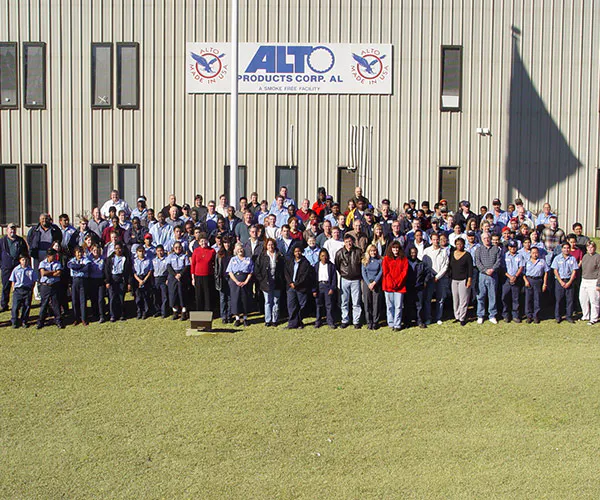Chick-fil-A Franchise Tracks Over $60,000 in Assets
Learn why a Maintenance Director at 2 Chick-fil-A locations chose UpKeep to replace word of mouth, text messages and paper work orders.

Challenge
Although Austin was responsible for two restaurant locations and around 100 assets, he admitted, “Prior to UpKeep, I really didn’t manage those assets. We operated by word of mouth, text messages, and later by paper work orders.”
Initially, Austin’s team didn’t monitor downtime, performance, or even preventive maintenance. The system was work-order based, but it couldn’t even handle basic task management. “Our biggest problem was that the maintenance system didn’t work if I was away,” Austin said. “I’d come back to 50 waiting work orders, and I’d have no idea what was going on.
Solution
Austin took advantage of UpKeep’s free trial and showed his boss what it could do. The team chose UpKeep because of its flexibility and user-friendliness. Initially, Austin only used it for work orders, but as goals were reached and adjusted, he began to explore other features of the system.
“I appreciate the live feed of work orders,” Austin said. “We’re able to see things right away and track where they’re at, even if we’re at home. Since implementing UpKeep, we’ve begun to also track assets, downtime, work time, parts inventory, preventive maintenance, and analytics.”
Results
UpKeep has helped Austin completely revamp his inventory system. Instead of spending hours looking for a part that could be at three different locations or not even in stock, Austin can look it up on UpKeep and locate the part immediately. This has helped Chick-fil-A reduce asset downtime and eliminate overstocking.
Communication is another area that has dramatically improved. Employees know where and how to submit work orders. Required fields ensure that Austin has all the information he needs to complete the work order, and everyone can log into the system to get a status update on any work order.
“I’m more organized and less stressed,” Austin said. “Looking at where I was before, I might have lost my job by now because I was so disorganized. UpKeep has allowed me to keep doing what I enjoy doing.”
Managing Maintenance Without a System
Without a real maintenance system, Austin’s biggest problem was keeping up with work orders when he was absent. Work orders were submitted by word of mouth or by paper and keeping track of tasks was impossible if Austin wasn’t actually at the locations.
“If I was in the store, I’d get those work orders right away and I’d know what was going on,” he said. “But if I went on vacation, work orders backed up pretty quickly.”
Even when Austin was onsite, he was unable to keep track of all the work orders. Tasks, especially low-priority ones, were often forgotten if they were submitted through a text or in-person conversation.
Managing parts inventory was also a struggle. “I might have to spend two hours locating a part, simply because I just don’t know where it’s at,” Austin explained. “It could be in multiple different locations. It was a huge waste of time, which resulted, of course, in higher machine downtime and financial losses.”
Discovering and Implementing UpKeep
Though Austin had always wanted to implement a computerized maintenance management system (CMMS), the cost had stood in the way. When price was no longer an issue, Austin researched the features he wanted a potential CMMS to have.
“I was looking for a maintenance platform that could accommodate what I needed it to do,” he said. “UpKeep was more user-friendly than the other systems I researched. I could customize it to what I need as far as tracking parts inventory, downtime, and so forth. The other platforms just didn’t have those features.
“I used UpKeep on the free trial plan for a week and then showed my boss what it could do,” Austin continued. Throughout the implementation process, Austin appreciated the customer service team at UpKeep.
“The customer service team is very responsive,” he said. “There’s usually someone to answer, and if there isn’t, the team gives me a call back within a day. Everyone on the team is knowledgeable about how UpKeep works.”
Evolution of Goals
Originally, the Chick-fil-A maintenance team only used UpKeep for work orders. “We didn’t track parts, preventive maintenance, assets, or analytics at that point,” Austin explained. “But even then, we all saw the value of UpKeep and what it could help us to do.”
Creating a parts inventory was another major goal. “I’d sit on my living room floor until midnight putting all the parts in,” he added. “We have more than 50,000 parts in inventory, so it was definitely a long process.”
Austin recently became a business plus member, and his goals continue to change. “I’m currently working on tracking analytics,” Austin said. “I track my downtime and work orders, as well as hourly rates for outside technicians, electricians, and plumbers. I can go back and see, for example, that I’ve saved $50,000 this month on maintenance.”
Austin is also working on tracking work order history. “We’ve used UpKeep for four or five years, and it would be really nice to review old work orders,” he reflected. “I’d love to see various calculations over the years. But I know that I neglected to put many of those work orders into UpKeep.” This year, Austin hopes to change that by making sure all his work orders are in UpKeep.
Prioritizing Tasks
With the information UpKeep offers, Austin is able to build his work day. “I’m able to prioritize tasks,” he said. “I make sure to finish high priority work orders first. I know exactly what my day is going to look like, and I’m no longer wasting time wandering around each store looking for problems. I already know exactly what’s going on.
“I'm in a position where I know what we have in stock and exactly where everything is,” Austin continued. “I know which work orders need to be completed and where the required parts are.
For example, if a work order comes in, Austin can immediately see that he needs, say, a pump seal for the repair. The night before, he can go into UpKeep and see if that part is available before starting the next day. Having the inventory information at his fingertips makes each day more efficient.
Managing and Improving Inventory
Although Austin spent hours organizing and inputting inventory data into UpKeep, he now appreciates the benefits – particularly cost savings from not overstocking and reduced downtime.
“Before UpKeep, I might spend more money on parts simply because I didn’t think I had them, when in reality I did,” Austin explained. “I used to order a part every month just to try and keep up with my inventory. It might just be little items that cost six cents, but I’d order a lot of them. Those parts started piling up because I didn’t remember that I’d purchased them the month before.
“Now I can see in the inventory that I have about 50 of those parts,” he continued. “So we order a different inventory item or wait until next month. In December, I went through UpKeep and realized I was low on stock on some things, so I went ahead and ordered those. Especially with the pandemic, my boss wants to keep the parts in stock, since shipping delays can be up to a year.”
Austin also appreciates the fact that UpKeep flags low inventory items. “Whereas, before I might not have seen that we were low on inventory, other than by physically counting items, now, I get my little red flag that says, ‘Hey, this is low, let's reorder this.’”
With over 50,000 parts worth around $60,000, tracking inventory isn’t easy. “UpKeep has helped me keep inventory down and functional as well,” said Austin.
Improved inventory also reduces downtime by helping technicians locate parts faster. With two locations and an off-site office and storage location, it used to take hours for Austin or his team to find parts. “Now, I can immediately find the parts I need and start the work order,” he added. “In terms of downtime, parts inventory is where UpKeep has helped the most. We’ve probably saved at least 50 percent in downtime.”
Improved inventory also creates a safer work environment for employees. “For example, we might have some parts missing on our fryers,” Austin explained. “I may be waiting on those parts, and while the fryers are still functional, there is a safety issue. Now, we probably have those items in stock, and I can look up how many we have and where they’re located. We can go ahead and repair the fryers right away. We want things to be functional, and we also want to make sure our team is safe.”
Simply having inventory knowledge available is a huge benefit not only for Austin’s locations, but also for the surrounding Chick-fil-A restaurants.
“My boss called me and asked if I had this part in stock,” Austin said. “He needed it for another location. Before, I might have spent a few hours trying to find the part. But with UpKeep, I was able to immediately tell my boss we had two in stock and exactly where they were.”
Improving Work Order Information
Before UpKeep, when something broke, employees were often confused about what to do and who to tell.
“UpKeep is more user-friendly, both on my end and their end,” Austin said. “We keep iPads in the store with UpKeep on them so that the team can submit a work order as soon as something breaks. Nobody has to log into a physical computer – it’s easy to press the button and get into the system.
“I also send the email link to anyone who wants UpKeep on their phone as well. That can be helpful, especially at our offsite office, which doesn’t have an iPad,” he continued.
When work orders were submitted by a text message or an in-person conversation, Austin struggled with getting a complete picture of the problem. UpKeep changed that drastically.
“I’m able to see work orders right away,” Austin said. “And when people submit them, they’re putting in all the information I require,” he continued. “I’m able to get the complete story without having to chase someone down to ask questions. I immediately know what’s going on, even before I get to the store.”
Austin appreciates the ability to submit pictures with work orders. “It really helps complete that whole story of what’s going on,” he said.
Better work order information allows the technicians to find inventory parts quickly and resolve problems, thus reducing downtime.
In the day-to-day of running the restaurants, Austin makes an effort to keep up with work orders. “The stores submit the work orders, and I usually review them immediately to avoid a backlog,” he said. “I make sure to take the time to put them into UpKeep.”
Better Communication
The ability to submit work orders from a phone is very beneficial for team communication.
“If employees remember a repair while sitting at home at 10 o’clock in the evening, they can go ahead and submit a work order from their phones,” Austin said. “Because submitting work orders is so easy, it’s less likely that tasks will be forgotten.”
UpKeep is available to the entire team. “Anyone can look up work orders and check that they’re in,” Austin said. “We’re also able to know whether it’s in progress, on hold, waiting for a part, or completed. With the comments and updates section, we can also see, for example, that this part won’t be here until this date.
“Before, I simply didn’t get enough information when work orders were submitted,” he continued. “Because I’m in charge of two different locations, I might not even know which location a work order is for. I used to pop my head in every day at both stores just to find out what was going on. Now, I know how many work orders I have at each location and I know where I’m going to work each day. That saves time and driving.”
Finally, improved information helps during audits. “When the health department comes through, we don’t get marked down as long as the work order is in the system,” Austin said.
Automating Preventive Maintenance Tasks
Austin struggled with preventive maintenance before implementing UpKeep. “Most of the time, I either forgot about it or didn’t have time for it,” he admitted. “At that point, I was struggling to simply find parts or figure out what was going on with a machine. Preventive maintenance tasks used to sit there for a month. Ten to 15 work orders would pile up and annoy me until I finally got around to them.
“I actually just completed a work order that was from last year,” he said. “It was just such a low priority that I kept pushing it off. I finally decided to just knock it out of the way.”
With 100 different assets to keep track of, preventive maintenance can definitely be a struggle. “If I forget to do the 30-day maintenance on an asset, it causes wear and tear on the machine,” Austin said. “UpKeep automatically creates those work orders so that I know when I have to complete preventive maintenance. Until it gets done, it stays in the system where I’ll be sure to see it.”
Austin believes that better preventive maintenance results in fewer breakdowns, and, as a result, fewer work orders. “At the moment I have only five work orders waiting,” he said.
Using Analytics to Justify Asset Replacement
Chick-fil-A only wants to replace equipment if repair costs are more than half the value of the machine. However, before UpKeep, it was impossible to see the comprehensive repair costs.
“Now, I tie my work orders to each asset,” Austin explained. “I was looking at how much our fryers repair costs were throughout last year and one cost more $6,000. It’s only an $8,000 machine, so I contacted corporate and they replaced it. It was because of UpKeep that I was able to see that number and have the comprehensive records I needed.”
UpKeep also allows Austin to see how many times he’s completed the same work order for an asset, which makes it possible to detect defects, find root causes, or justify machine replacement. “Before UpKeep, I wouldn’t have even remembered which work orders I’d done the month before,” Austin said. “Now, I can look at work order history and find trends like this.”
Working on Employee Cooperation
“It took a long time to get everyone on board, probably a few years,” Austin admitted. “Even now, I still get work order texts all the time. It’s been a struggle to get everyone to use UpKeep.”
However, most of the employees now have the mindset that a task won’t get done until it’s in UpKeep.
“Overall, the managers have responded well to it,” Austin continued. “One of the managers told someone, ‘Oh, Austin doesn’t work on anything until you put it in UpKeep.’ Of course, that’s the only way I know that something is broken.”
It continues to be a struggle at times, however. “There’s always something broken,” Austin said. “It might be something little that doesn’t affect machine function too much. Sometimes employees just wait around and ignore those little problems. I’m trying to train them to be proactive about minor issues, even if they’re not causing the machine to go down.”
Tracking Time
“Time tracking is definitely our most helpful KPI,” Austin said. “I’m able to track my own work time, time spent on each category, and machine downtime.”
He gave an example. “Last week, I fixed a light and it took me a total of three hours,” Austin explained. “But it really only took me an hour to do the light – the other two hours I spent trying to get the part in town because I didn’t have it in stock.
“I’m able to break down my time into wrench time and drive time,” he continued. “I can see that I spent 30 hours driving this week. As a result, I’ll look at solutions to reduce driving time. We can also look at keeping additional parts in inventory. We may never have needed this specific part before, but it may be worth it to keep it in stock – two hours of my time is worth far more than a $4 part.”
Austin gave another example that shows how much hired help speeds jobs up. “It took me an hour and a half to clean the floors alone,” he said. “With help, it takes us only about 32 minutes. Our time tracking KPI allows us to see just how much that hired help was cutting down on time.”
The company occasionally hires third-party vendors to fix certain problems. “When we have other contractors come out, I don’t track their time,” Austin said. “But I know that fixing a certain electrical issue took me three hours to resolve. I base their time off that even though they may have done it quicker.”
Austin sorts his work orders into a number of categories, such as electrical, cleaning, damage, preventive maintenance, and project. He tracks time spent on each category.
“In the analytics, I can see exactly how much time I’ve spent on cleaning, for example, and compare it to other categories,” he said. “That gives us a good idea of where our time is going.” Better time tracking allows Austin and his team to figure out ways to save time, which helps them reduce machine downtime and increase profits.
“We’re pulling $16 million a year in business,” Austin said. “A machine being down for an hour can really cost us.”
Aggressive Future Plans
As the company looks forward into 2022, Austin has aggressive plans to continue refining his parts inventory, expand his work order history, and continue training Chick-fil-A employees to notice more things that can be improved around them.
“Last year, I completed more than 700 work orders through the system – in addition to those I completed outside of UpKeep,” Austin said. “I just reset my time for the new year, and this year I’m hoping to see 1500 work orders completed.”
Want to keep reading?

Equipment / Manufacturing
Alto Products moves from reactive to preventive maintenance

Equipment / Manufacturing
Innovative Micro Technology creates a safety-focused culture

Equipment / Manufacturing
Columbia Fruit saves money with organized inventory
4,000+ COMPANIES RELY ON ASSET OPERATIONS MANAGEMENT
Leading the Way to a Better Future for Maintenance and Reliability
Your asset and equipment data doesn't belong in a silo. UpKeep makes it simple to see where everything stands, all in one place. That means less guesswork and more time to focus on what matters.

![[Review Badge] Gartner Peer Insights (Dark)](https://www.datocms-assets.com/38028/1673900494-gartner-logo-dark.png?auto=compress&fm=webp&w=336)
